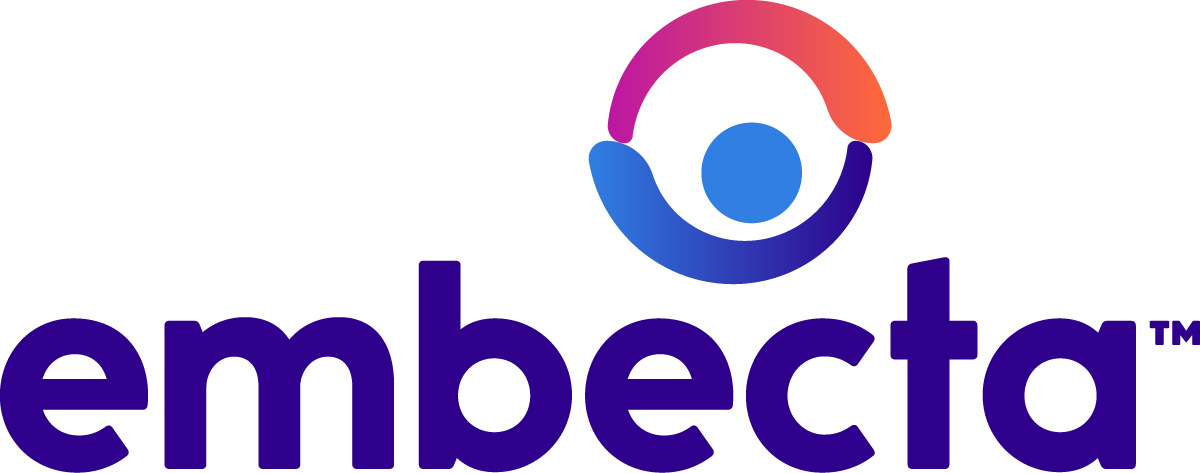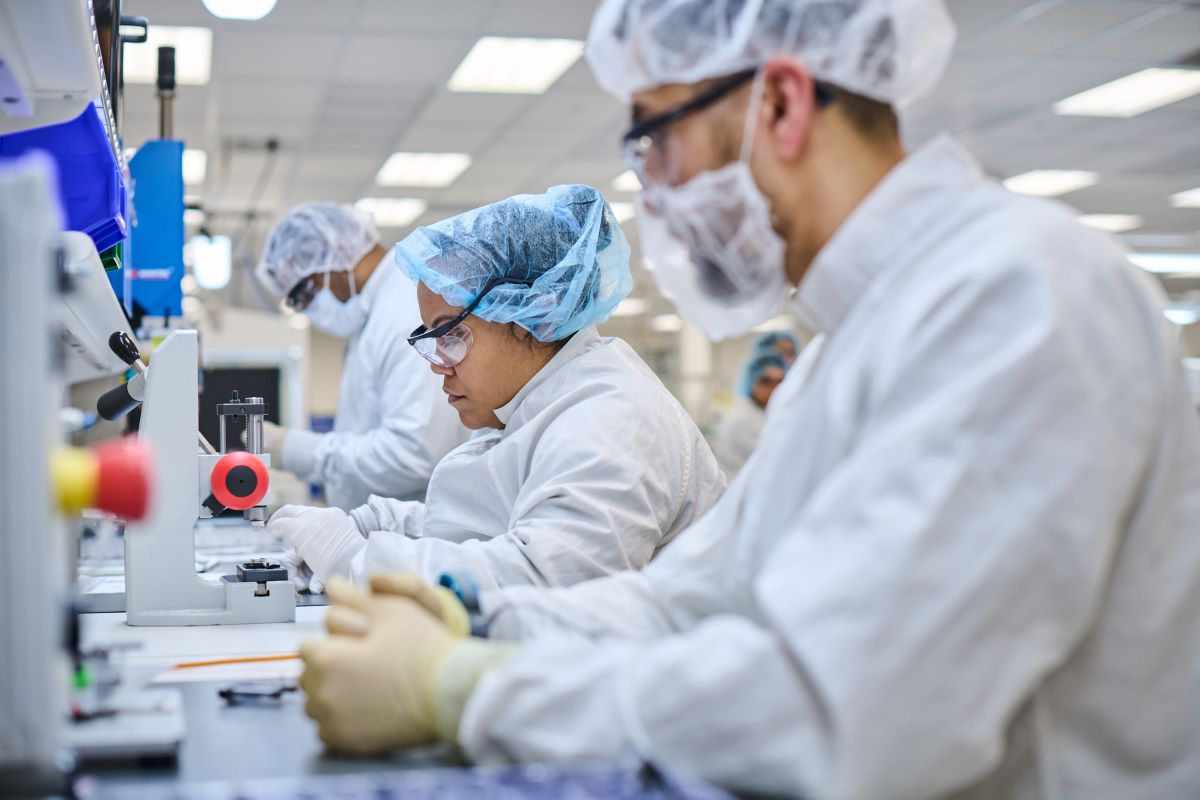ARTICLE SUMMARY:
embecta, a pure-play diabetes company, is carrying forward a nearly 100-year legacy of improving lives and making insulin injections accessible to a growing number of people living with diabetes.

embecta
embecta is one of the largest pure-play diabetes care companies in the world, leveraging its nearly 100-year legacy in insulin delivery to empower people with diabetes to live their best life through innovative solutions, partnerships and the passion of approximately 2,000 employees around the globe.
In 2024, the world will mark 100 years since the first dedicated insulin syringe was developed.1 These first syringes were critical to helping patients properly administer their insulin, changing the prognosis of what had previously been the near certainty of a premature death.
Since that time, remarkable advances have made insulin delivery devices safer, more accessible, and more accurate than ever.2 However, with rates of diabetes—especially type 2 diabetes—growing worldwide, it’s the right time for a renewed effort to educate the global public about managing diabetes and insulin delivery methods, and to provide tools wherever they are needed. As a key player in the century-long effort to improve the lives of people with diabetes, embecta, previously part of Becton, Dickinson and Company (BD), is on the front lines of addressing this growing epidemic by making advances and providing education in the diabetes space.
To understand where innovation happens today, consider where we started. Once insulin was understood and made accessible in 1921,3 discovery of insulin was transformative and expanded the universe of research into insulin action and resistance.4 When BD introduced the first specialized insulin syringes, they were miracles of their time, but by today’s standards were cumbersome devices made of glass and metal that needed to be sterilized by boiling.
In 1954, BD introduced the first disposable glass syringe, a huge step forward in convenience and safety for the diabetes community. Plastic needles followed shortly after, which greatly improved the ease and safety of insulin injections.
In 1991, another huge step forward was made with the introduction of the pen needle. The combination of an incredibly small needle—often just the width of a couple of human hairs—with a safe and disposable device made these pen needles one of the most affordable and convenient options for people with diabetes. In the last three decades, the pen needle has been further refined, leading to advances such as the BD Nano™ 2nd Gen pen needle. This has a contoured needle base to help correct for varying forces that may be applied during the injection to consistently deliver the insulin around the 4mm target depth.5 It provides an easier and more comfortable injection experience that reduces injection pain6 through a unique design.
Fast-forward a couple of decades and smart, connected pens appeared, revolutionizing the delivery of insulin once again. These smart pens can automatically record and transfer the dose of insulin injection and allow people with diabetes and their caretakers to track data through mobile apps, making data collection and recording more seamless and accurate than ever. Already, insulin pump therapy, which, when combined with smart continuous glucose monitors (CGM) can be used as part of an automated insulin delivery (AID) system, is changing the lives of people living with diabetes. Tomorrow, we could even see smart patches delivering intradermal drug doses driving diabetes innovation forward once again.7
As we look toward the future, we must consider not only the technology itself but also the context in which it is used. Diabetes nowaffectsmillions of people worldwide—roughly537 million adults worldwide as of 2021.8Rates of diagnosis, treatment, and care continue to rise—especially in developing countries—due to changing demographics, lifestyle factors, and increased access to medical treatment and diagnosis. In 2021,three out of every four adults living with diabetes live in low- and middle-income countries.8
Health care professionals providing support to the diabetes community must strive to ensure that today’s innovations are available where they’re most needed, and that the right type of device is deployed in the right place. For example, while complex and transformative devices are on the horizon, there are communities where proven, cost-effective, and safe options, such as pen needles and insulin syringes, are the most appropriate tools.
Providing diabetes education resources to a more global diabetes community requires research and development as well. The increasing incidence of diabetes requires informing people with diabetes, their communities—and society—about proper techniques and considerations. The best insulin delivery methods may not be effective if used improperly. In some regions, a lack of awareness of proper diabetes management proves a barrier to individuals getting the support they need to care for their diabetes. People with diabetes need not only safe and effective delivery tools, but also information on needle reuse, injection sites and proper rotation, insulin storage and other important topics. embecta offers solutions and educational resources to help people manage their diabetes, including a Getting Started Guide and the BD™ Diabetes Care App. We are also proud to be able to engage with patients through our online social channels offering diabetes and lifestyle-related content and education.
Producing and delivering these life-saving tools efficiently requires a new form of innovation. As an independent company, embecta has the agilityto nimbly address global diabetes supply needs and challenges in our interconnected world. embecta is focused on creating an increasingly safe and flexible global network to ensure insulin devices are available where and when they are needed.During the COVID-19 pandemic, embecta improved its in-transit and end-to-end supply chain visibility and was uniquely able to avoid manufacturing delays and backlogs thanks to quick thinking and decisive action across our truly global network of suppliers and distributors.When raw packaging materials became scarce and freight overwhelmed, embecta was able to quickly approve alternative materials and shift from ocean to air freight to avoid delays and attend to higher-than-expected demand. Looking to the future, the company is now transitioning to the gold standard of enterprise resource planning software, ensuring a unified process and that there will be even more global transparency and reduced risk when sourcing and shipping worldwide.
Our company brought to market many of the advances that have improved the lives of people with diabetes. Today, embecta pairs that long-standing history of advancement and care with the agility that comes from focusing exclusively on the diabetes community. Asthe leading producer of diabetes injection devices, we have long been committed to helping people with diabetes live their lives with fewer limitations. After a century of progress, we’re just getting started.
Notes
3Medical News Today – Who Discovered Insulin
5Rini C, Roberts BC, Morel D, et al. Evaluating the impact of human
factors and pen needle design on insulin pen injection. J Diabetes Sci Technol. 2019;13(3):533-545
6Whooley S, Briskin T, Gibney MA, Blank LR, Berube J, Pflug BK. Evaluating the User Performance and Experience with a Re-Engineered 4 mm × 32G Pen Needle: A Randomized Trial with Similar Length/Gauge Needles. Diabetes Ther. 2019 Apr;10(2):697-712
7Intradermal insulin delivery: a promising future for diabetes management
8 International Diabetes Federation
embecta is one of the largest pure-play diabetes care companies in the world, leveraging its nearly 100-year legacy in insulin delivery to empower people with diabetes to live their best life through innovative solutions, partnerships and the passion of approximately 2,000 employees around the globe. Visit embecta.com or follow our social channels on LinkedIn, Facebook, Instagram and Twitter. embecta is formerly part of BD, the manufacturer of the advertised products.
Learn more at embecta
